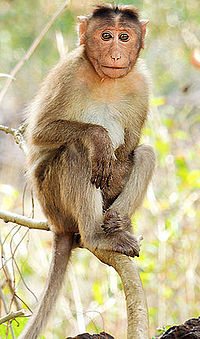
Current distribution of two species of Chinese macaques (Macaca arctoides and Macaca thibetana) and the possible influence of climate change on future distribution
Sign Up to like & getrecommendations! Published in 2023 at "American Journal of Primatology"
DOI: 10.1002/ajp.23493
Abstract: Predicting the spatial distribution of species and suitable areas under global climate change could provide a reference for species conservation and long‐term management strategies. Macaca thibetana and Macaca arctoides are two endangered species of Chinese… read more here.
Keywords: climate change; climate; macaca thibetana; china ... See more keywords

Diverse diets and low‐fiber, low‐tannin foraging preferences: Foraging criteria of Tibetan macaques (Macaca thibetana) at low altitude in Huangshan
Sign Up to like & getrecommendations! Published in 2022 at "Ecology and Evolution"
DOI: 10.1002/ece3.9338
Abstract: Abstract Nutrient composition and food availability determine food choices and foraging strategies of animals, while altitude and geographical location affect species distribution and food availability. Tibetan macaques (Macaca thibetana) have sophisticated foraging strategies as the… read more here.
Keywords: food; food availability; tannin; tibetan macaques ... See more keywords

Grooming networks reveal intra- and intersexual social relationships in Macaca thibetana
Sign Up to like & getrecommendations! Published in 2018 at "Primates"
DOI: 10.1007/s10329-018-00707-8
Abstract: The analysis of grooming networks is a powerful tool to examine individual social and sexual relationships and how these relationships change over time. In this study, we investigated the seasonal dynamics of intra- and intersexual… read more here.
Keywords: tibetan macaques; social relationships; grooming networks; intra intersexual ... See more keywords

Interchange between grooming and infant handling in female Tibetan macaques (Macaca thibetana)
Sign Up to like & getrecommendations! Published in 2019 at "Zoological Research"
DOI: 10.24272/j.issn.2095-8137.2018.049
Abstract: In some non-human primates, infants function as a social tool that can bridge relationships among group members. Infants are a desired commodity for group members, and mothers control access to them. The biological market theory… read more here.
Keywords: tibetan macaques; macaques macaca; non mothers; grooming infant ... See more keywords